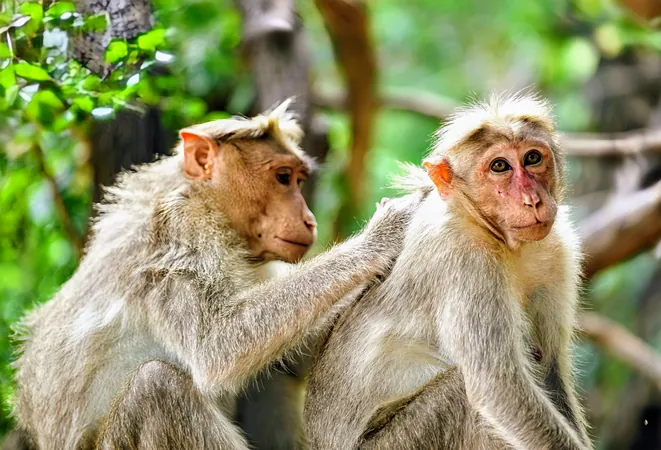
The Power of Social Bonds: How Capuchin Monkeys and Humans Learn Together
2024-11-19
Author: Jia
The Power of Social Bonds: How Capuchin Monkeys and Humans Learn Together
Deep in Brazil’s breathtaking Serra da Capivara National Park, an extraordinary spectacle reveals the similarities between how wild bearded capuchin monkeys and humans learn from one another. These monkeys showcase their problem-solving skills by observing their peers to access food, and recent research demonstrates just how essential social bonds are for this process.
Who’s Clever Enough to Snatch the Banana?
A dedicated research team from Durham University set up a captivating experiment involving a sizable box filled with food, which could be opened by either lifting a door or pulling a knob. As the researchers watched from their treetop vantage point, they aimed to unravel not only which monkeys could unlock the rewards inside but also how this knowledge would propagate among the group.
The Role of Social Tolerance in Learning
This groundbreaking study shifted the focus from mere intelligence to the fascinating concept of social tolerance. Social tolerance refers to the interactions within the monkey community—who spends time with whom and who has access to food or useful information.
Monkey See, Monkey Learn — But With a Twist
The research findings revealed a remarkable fact: the capuchin monkeys primarily learned through direct observation of their peers. In particular, monkeys displaying social tolerance, often labeled as 'friendlier' due to behaviors like grooming one another, were more adept at acquiring knowledge from successful counterparts. This highlights an essential aspect of learning: social connections matter.
Additionally, it was found that those yet to master the box's mechanics were more likely to observe the successful males, suggesting that social dynamics significantly influence learning opportunities.
A Deeper Look at Social Learning
With Professor Rachel Kendal overseeing the study, she emphasized that capuchin monkeys boast the largest "toolkit" among monkey species, likely due to their capacity for social learning across generations. The implications of these findings extend far beyond the monkey kingdom.
Hierarchy and Learning Opportunities
In the complex social structures of monkey groups, status emerges as a critical element. If a monkey possesses skill but lacks sufficient social standing, others may not learn from it. Conversely, if a monkey is overly intolerant and restricts observation, knowledge transfer ceases. This issue illustrates how social tolerance decisively affects learning outcomes.
Reflections on Human Societies
What does this mean for us? The study offers compelling parallels between capuchin monkeys and human societies, suggesting that social tolerance and the ability to learn through observation are crucial for cultural development. Just as monkeys rely on their social networks to pass down skills and customs, humans have utilized social structures throughout history to share knowledge, collaborate, and maintain societal cohesion.
Future Research Directions
Looking ahead, researchers are eager to delve deeper into these dynamics, potentially applying findings across various primate species and other animals. Comparative studies could illuminate the intricacies of social learning environments and the effects of hierarchies, ultimately expanding our understanding of social intelligence's evolutionary foundations.
Unveiling Our Primate Past
The knowledge gleaned from this Durham University study holds the potential to elucidate the evolutionary forces that have shaped not only primate behavior but also human cultural development. This research prompts us to reconsider the significance of social interactions in learning and adaptation.
To learn more about the intriguing intersection of social behavior and learning in primates, keep your eyes peeled for future studies in this fascinating field!


 Brasil (PT)
Brasil (PT)
 Canada (EN)
Canada (EN)
 Chile (ES)
Chile (ES)
 España (ES)
España (ES)
 France (FR)
France (FR)
 Hong Kong (EN)
Hong Kong (EN)
 Italia (IT)
Italia (IT)
 日本 (JA)
日本 (JA)
 Magyarország (HU)
Magyarország (HU)
 Norge (NO)
Norge (NO)
 Polska (PL)
Polska (PL)
 Schweiz (DE)
Schweiz (DE)
 Singapore (EN)
Singapore (EN)
 Sverige (SV)
Sverige (SV)
 Suomi (FI)
Suomi (FI)
 Türkiye (TR)
Türkiye (TR)